
Bloomington is a city in and the county seat of Monroe County, Indiana, United States. The population was 79,168 at the 2020 census. It is the seventh-most populous city in Indiana and the fourth-most populous outside the Indianapolis metropolitan area. It is the home of Indiana University Bloomington, the flagship campus of the Indiana University system. Established in 1820, IU Bloomington enrolls over 45,000 students.
A slacker is someone who habitually avoids work or lacks work ethic.
Jonny Quest is a science fiction–adventure media franchise created by Doug Wildey for Hanna-Barbera. It revolves around the titular Jonny Quest, a boy who accompanies his scientist father on extraordinary adventures. The franchise started with a 1964–65 television series of the same name, and has come to include two sequel television series, two television films and three video games. It is currently owned by Warner Bros. after Hanna-Barbera was absorbed by Warner Bros. Animationand succeeded by Cartoon Network Studios.
Public-access television is traditionally a form of non-commercial mass media where the general public can create content television programming which is narrowcast through cable television specialty channels. Public-access television was created in the United States between 1969 and 1971 by the Federal Communications Commission (FCC), under Chairman Dean Burch, based on pioneering work and advocacy of George Stoney, Red Burns, and Sidney Dean.
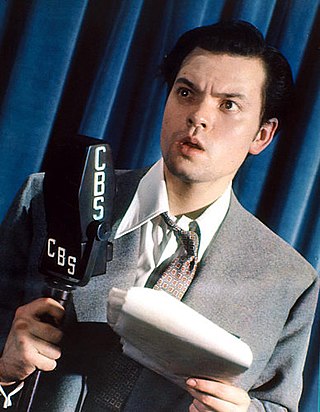
The Campbell Playhouse (1938–1940) was a live CBS radio drama series directed by and starring Orson Welles. Produced by Welles and John Houseman, it was a sponsored continuation of The Mercury Theatre on the Air. The series offered hour-long adaptations of classic plays and novels, as well as adaptations of popular motion pictures.

Garfield and Friends is an American animated television series based on the comic strip Garfield by Jim Davis. The show aired on CBS as part of its Saturday morning children's lineup from September 17, 1988 to December 10, 1994.
Streaming television is the digital distribution of television content, such as television series and films, streamed over the Internet. Standing in contrast to dedicated terrestrial television delivered by over-the-air aerial systems, cable television, and/or satellite television systems, streaming television is provided as over-the-top media (OTT), or as Internet Protocol television (IPTV). In the United States, streaming television has become "the dominant form of TV viewing."

WTIU is a PBS member television station in Bloomington, Indiana, United States. It is owned by Indiana University alongside NPR member WFIU. The two stations share studios on the Indiana University campus on East 7th Street in Bloomington; WTIU's transmitter is located on Sare Road on the city's southeast side.

WTTV and WTTK are television stations licensed respectively to Bloomington and Kokomo, Indiana, United States, serving as the CBS affiliates for the Indianapolis area. They are owned by Nexstar Media Group alongside Fox affiliate WXIN. The stations share studios on Network Place in northwestern Indianapolis. WTTV's transmitter is located on State Road 252 in Trafalgar, while WTTK's transmitter sits on West 73rd Street on the northern outskirts of Indianapolis.
WIPX-TV is a television station licensed to Bloomington, Indiana, United States, serving the Indianapolis area as an affiliate of Ion Television. It is owned by Inyo Broadcast Holdings alongside Scripps News affiliate WCLJ-TV. WIPX-TV and WCLJ-TV share offices on Production Drive in southwestern Indianapolis; through a channel sharing agreement, the two stations transmit using WIPX-TV's spectrum from an antenna on SR 252 in Trafalgar, Indiana.
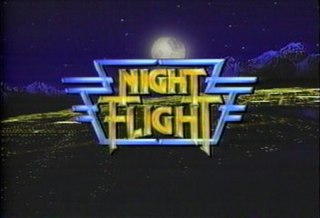
Night Flight is an online visual-arts magazine and variety television show that originated on cable TV network USA Network. It originally aired from 1981 to 1988 before moving to syndication in the early 1990s. The show relaunched online on nightflight.com in 2015 with original episodes that can be streamed on the subscription channel Night Flight Plus. In April 2018, it returned to cable television as a short form (15-minute) program airing late Friday nights/early Saturday mornings on the network IFC. It includes a mix of mainstream and alternative music videos, artist interviews, B movies, documentaries, short films, stand-up comedy and animation.
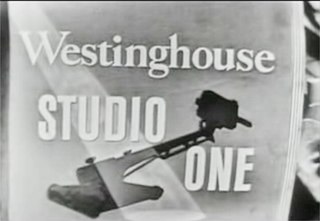
Studio One is an American anthology drama television series that was adapted from a radio series. It was created in 1947 by Canadian director Fletcher Markle, who came to CBS from the CBC. It premiered on November 7, 1948, and ended on September 29, 1958, with a total of 467 episodes over the course of 10 seasons.
A web series is a series of short scripted or non-scripted online videos, generally in episodic form, released on the Internet, which first emerged in the late 1990s and became more prominent in the early 2000s. A single instance of a web series program can be called an episode or a webisode. The scale of a web series is small and a typical episode can be anywhere from three to fifteen minutes in length. Web series are distributed online on video sharing websites and apps, such as YouTube, Vimeo and TikTok, and can be watched on devices such as smartphones, tablets, desktops, laptops, and Smart TVs. They can also be released on social media platforms. Because of the nature of the Internet, a web series may be interactive and immersive. Web series are classified as new media.

TMZ on TV is an American syndicated entertainment and gossip news television show that premiered on September 10, 2007. It is essentially a televised version of its sister operation, TMZ, a news website which has a heavy emphasis on gossip about celebrities' personal lives, and which debuted in December 2005.

ECW Hardcore TV is an American professional wrestling television program that was produced by the Philadelphia based promotion Extreme Championship Wrestling (ECW) composed of footage from live shows and recorded interviews. It ran in syndication from April 6, 1993 to December 31, 2000.

AgDay is a syndicated daily half-hour television program presented in magazine format focusing on agriculture news, agribusiness, and country living. It generally airs in early morning timeslots on stations throughout the country and also airs weekday mornings on the digital cable and satellite channel RFD-TV. It is taped at WNDU studios in South Bend, Indiana. It is hosted and produced by Clinton Griffiths.

Monroe County Courthouse in Bloomington, Indiana is a Beaux Arts building built in 1908. It was listed on the National Register of Historic Places in 1976. It is located in the Courthouse Square Historic District and is the seat of government for Monroe County, Indiana.
Family Broadcasting Corporation, formerly known as LeSEA Broadcasting, is an American Christian television network. Founded by Lester Sumrall in 1972, Family Broadcasting Corporation is headquartered in South Bend, Indiana, and broadcasts Christian and family programming. Peter Sumrall, son of Lester Sumrall, served as its president and chief executive officer from 2002 to 2015. His son, Drew Sumrall, now serves in the same position.
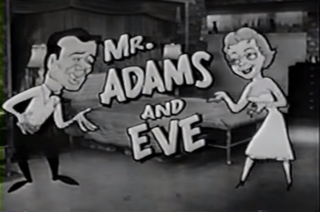
Mr. Adams and Eve is an American sitcom television series about a married couple who are both movie stars. It stars Howard Duff and Ida Lupino and aired on CBS from January 4, 1957, to July 8, 1958.
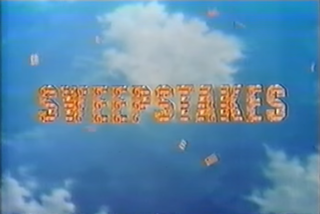
Sweepstakes, stylized as $weepstake$, is an American anthology television series that aired in the United States on NBC during the 1978–-79 television season. It depicts the lives of people who hope to win a large amount of money in a sweepstakes and what happens after they win — or do not win — the money.













